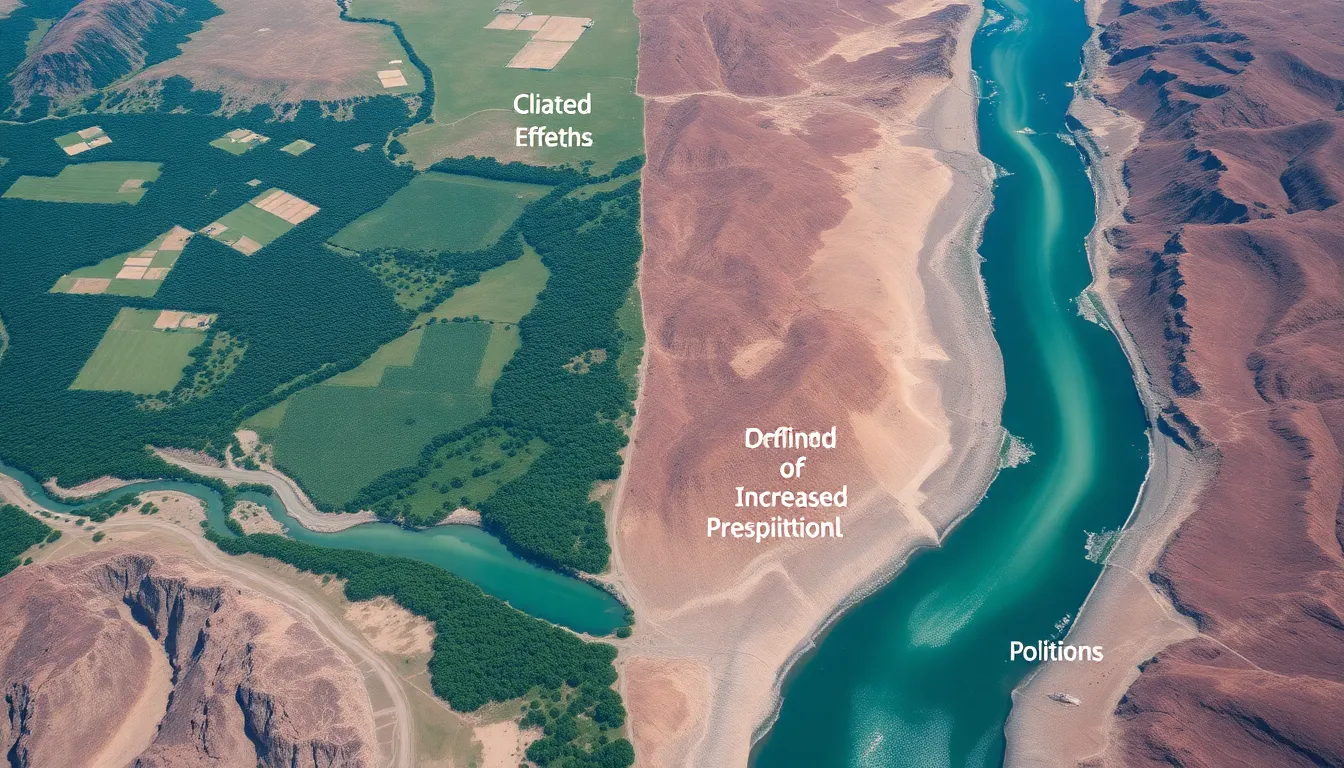Climate change isn’t just a buzzword; it’s the hottest topic on the planet—literally! As temperatures rise and weather patterns go haywire, understanding climate trends becomes essential for everyone. It’s like trying to decipher a teenager’s mood swings, but way more critical. From melting ice caps to unexpected heatwaves, these trends are shaping our world in ways we can’t ignore.
Table of Contents
ToggleOverview of Climate Trends
Climate trends illustrate significant changes in global weather patterns and temperatures. Notable increases in average temperatures over the past century indicate a clear warming trend. In 2021, the global temperature reached an average of 1.2 degrees Celsius above pre-industrial levels. Extreme weather events occur more frequently as temperatures rise, manifesting as hurricanes, wildfires, and droughts.
In addition to temperature changes, scientists observe shifts in precipitation patterns. Some regions experience heavier rainfall, while others face prolonged dry spells. Data shows that by 2050, water scarcity could affect over 2 billion people worldwide. Such water fluctuations create challenges for agriculture, affecting food security.
Melting ice caps and glaciers further exemplify alarming climate trends. Arctic sea ice extent has declined by approximately 40 percent since 1979. This decline threatens marine ecosystems and contributes to rising sea levels. Coastal cities, especially, face significant risks from projected sea-level rise of up to 1.2 meters by 2100.
Biodiversity loss frequently accompanies these climate shifts. Species extinction rates have accelerated, with nearly one million species at risk due to changing habitats. Conservation efforts are essential to protect vulnerable ecosystems and maintain biodiversity.
Understanding these trends requires comprehensive data analysis and ongoing research. Organizations like the Intergovernmental Panel on Climate Change (IPCC) continue to collect and publish crucial information on climate change. By monitoring trends, policymakers can make informed decisions to combat the effects of climate change effectively.
Historical Climate Trends

Historical climate trends reveal significant changes over decades, especially in temperature and precipitation patterns. Understanding these patterns provides crucial insights into climate change’s long-term effects.
Temperature Patterns
Temperature increases dominate historical climate data. Global average temperatures rose approximately 1.2 degrees Celsius above pre-industrial levels by 2021. Notably, the last century witnessed the six warmest years on record occurring between 2015 and 2021. Both land and ocean temperatures reflect this upward trend, affecting ecosystems globally. Extreme heat events became more frequent; for instance, summer heatwaves, once uncommon, now impact regions worldwide. These shifts correlate with carbon dioxide concentrations exceeding 400 parts per million, contributing to rising temperatures.
Precipitation Changes
Precipitation patterns displayed significant alterations due to climate change. Increased precipitation in some regions contrasted sharply with pronounced drought in others. Over two billion people may face water scarcity by 2050 if shifts continue. Climate models project changes in rainfall distribution, with northern areas experiencing heavier rainfall while southern areas become drier. Flooding and erosion risk rise alongside these shifts, impacting agriculture and freshwater resources. Analyzing these trends highlights the urgency for strategies to manage water supplies and adapt agriculture practices.
Current Climate Trends
Current climate trends reveal critical variations in weather patterns and temperature increases globally. Significant data underscores the pressing nature of these trends.
Regional Variations
Regional climate changes exhibit considerable diversity, impacting ecosystems and communities differently. For instance, some areas like the Arctic experience drastic warming, with temperatures rising at twice the global average, creating challenges for wildlife. In contrast, regions such as Southern Africa face increasing drought conditions, resulting in food insecurity for millions. Coastal regions deal with rising sea levels, putting cities at greater risk of flooding. Notably, over two billion people could face water scarcity by 2050, emphasizing the urgency for localized adaptation strategies. Each locality demonstrates unique responses to climate change, driving the need for targeted solutions.
Extreme Weather Events
Extreme weather events have escalated in frequency and intensity. Data signifies a marked increase in incidents such as hurricanes, with the Atlantic region seeing a 40 percent uptick in category 4 and 5 storms since the 1980s. Heatwaves now occur more often, contributing to health crises across populations. Wildfires have also surged in regions like California, where fire seasons extend longer than in previous decades. Severe flooding disrupts communities, particularly in areas with inadequate infrastructure, leading to displacement and economic loss. With climate forecasts indicating ongoing trends, preparedness and resilience against extreme weather remain crucial.
Future Projections of Climate Trends
Future projections of climate trends emphasize the urgency to act. Increased global temperatures and altered weather patterns will define the coming decades.
Modeling Climate Scenarios
Modeling climate scenarios involves creating simulations to forecast future conditions. Many climate models predict a rise in global temperatures by 1.5 to 2 degrees Celsius by 2040 if current trends continue. Variables considered include greenhouse gas emissions, carbon absorption, and land use changes. Enhanced accuracy in these models helps guide decisions in urban planning and resource management. Organizations like the IPCC provide valuable assessments that inform the effectiveness of various climate policies.
Implications for Policy and Society
Policy implications emerge from the projected climate changes. Governments will face challenges in addressing food security and water scarcity linked to shifting climate patterns. As more regions experience severe droughts and flooding, adaptive policies will need priority. Effective regulation will promote sustainable practices in agriculture and energy production. Communities require investments in resilience to protect against extreme weather occurrences. Stakeholders must collaborate to implement these strategies across all sectors for maximum impact against climate change.
The urgency of addressing climate trends cannot be overstated. As global temperatures continue to rise and weather patterns become increasingly erratic, the implications for ecosystems and human societies grow more severe. With projections indicating further increases in temperature and extreme weather events, proactive measures are essential.
Governments and communities must prioritize adaptive policies to manage food security and water scarcity. Collaboration across sectors is vital for implementing sustainable practices that will mitigate the impacts of climate change. By investing in resilience and fostering innovation, society can better prepare for the challenges ahead, ensuring a sustainable future for generations to come.
